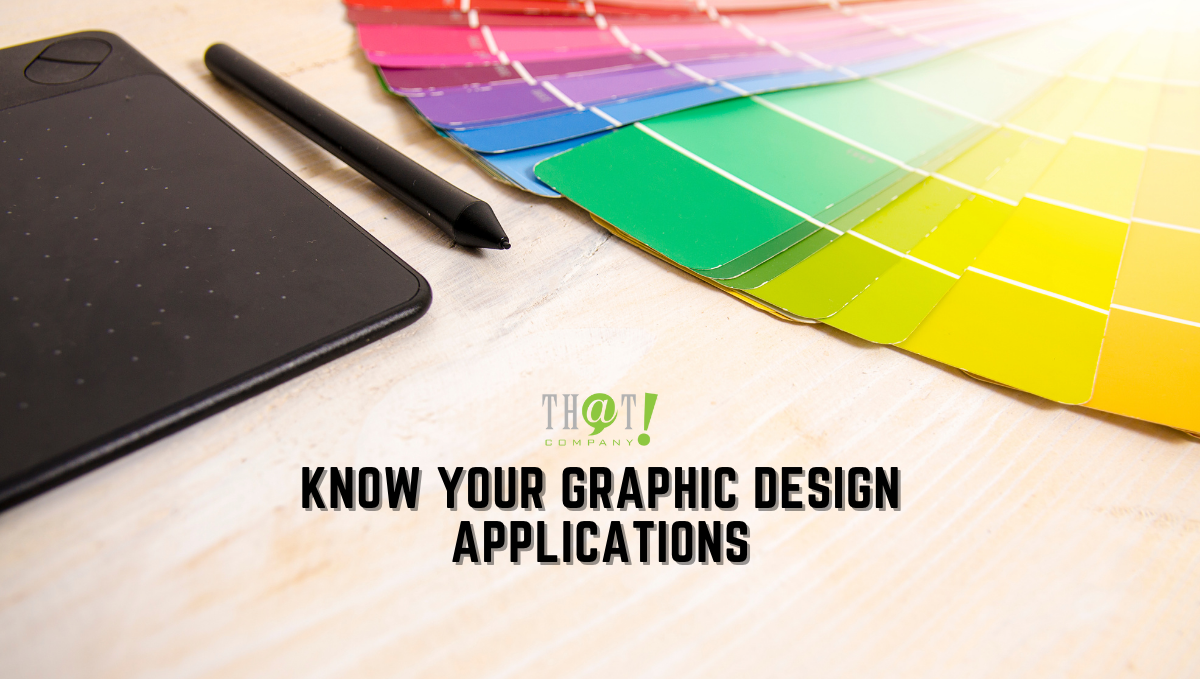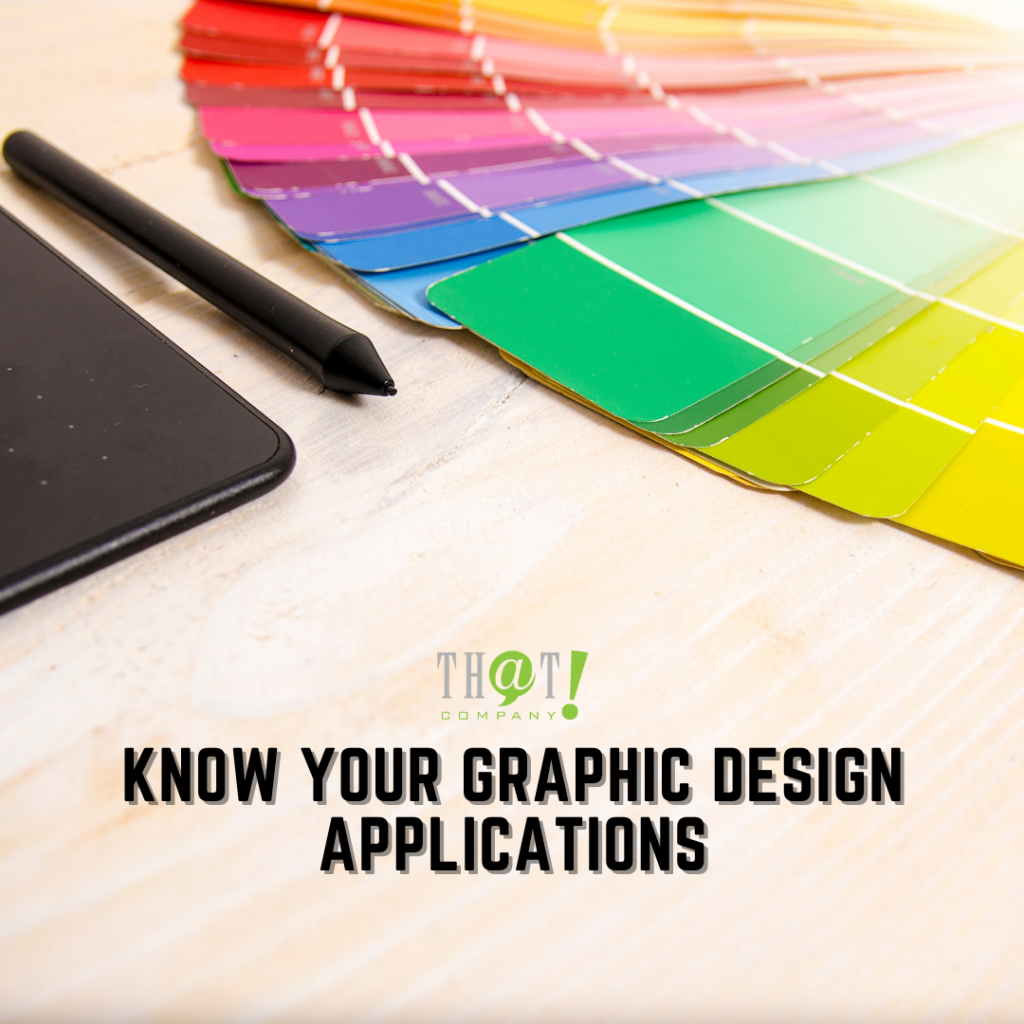
Graphic design applications have come a long way in a short amount of time (ok it has been a while… but I’m old, I sometimes forget that), and as with all good things eventually, there is strong competition in almost every successful market space. That has for sure happened in the space of graphic design application as I often feel overwhelmed with the number of options provided to me. People who have been doing digital graphic design for any amount of time will be familiar with companies like Adobe, Macromedia, and Corel. For me growing up an artist these were at the top of the hill when it came to being creative on a computer (I’ll try not to mention the Amiga as it will leave many scratching their heads. But, I will say, Agnus, Paula, and Dennis… I miss you.) Ahem, sorry I got a little teary-eyed, where was I… While Macromedia has gone away (bought by Adobe and merged into their creative suite), other competitors have since entered this market space as both paid and free alternatives.
Free Graphic Design Application Alternatives
While you would expect that paid options would be more mature and simply better, you’d be selling many of the free alternatives short as many of them have grown into very competent applications in their own right. I’m sure some would consider it debatable, but I may even say that applications have outpaced the need for them in most circumstances as even the smaller applications can create absolutely amazing work given the right designer is behind it. With that said it urges me to say that if you’re at the level of trying to decide what you need to complete your task, you’re probably at the level where you should be starting off with the free or lower-cost options to at least get your feet wet unless of course, you’re sure of the need and direction your job requirements might take you. If you’re doing it for fun, worried about the money or it’s hobby-related, yeah start with the free options as you may find digital art is not the same as a good ‘ole pencil and paper sometimes. One of the major thoughts that should spark would be, is “owning” your software compared to “leasing or renting” your software better, worse, or does it even matter. As Adobe is a top major competitor in almost all of the areas I’ll discuss, I’ll just come right out and say, “I prefer to own my software.”
 The first thing to understand is what type of graphic design applications you’re looking for or need to suit your particular goal. If you’re getting into graphic design digitally on a computer a little patience is needed when choosing a graphic design application, as this decision will likely be the biggest investment you make in both time invested in learning and money spent. My advice to you, before choosing a package or standalone application, it’s worth noting your needs before actually making that investment. Unless of course you take my other advice and start with the free software… it’s free man, you can’t beat that. It’s all so confusing.
The first thing to understand is what type of graphic design applications you’re looking for or need to suit your particular goal. If you’re getting into graphic design digitally on a computer a little patience is needed when choosing a graphic design application, as this decision will likely be the biggest investment you make in both time invested in learning and money spent. My advice to you, before choosing a package or standalone application, it’s worth noting your needs before actually making that investment. Unless of course you take my other advice and start with the free software… it’s free man, you can’t beat that. It’s all so confusing.
You should also decide on the design philosophy that rules your design process. There are many different approaches to working, with some being most suitable for print work and others being most applicable to the web. Know what it is you’re wanting to create and it will steer you in the proper direction, as you’ll note, many of the applications are vastly different and have strengths and weaknesses depending on your desired outcome or need.
Some businesses may consider having a white label software program that can be used for graphic designs in both print and web. Contact us if you want to know more about what does white label mean.
As I stated above, there are many different options depending on your needs and available cash, and just as many different types of applications to suit those needs. Some of the key different areas of specialty are:
- Raster graphics (think bitmap, jpg, photo retouching, or freehand pixel art)
- Vector graphics (artwork defined by mathematical points on a plan, very scalable with resizing causing no loss in quality)
- Desktop Publishing (think creating a nice looking book of your holiday photos all the way to publishing an online or print brochure or magazine)
- Video / Audio editing – YouTube videos to blogcast, these are the applications you’re looking for
Below is a small sampling of some of the more popular applications and is by no means a complete list. I’ve listed the applications that I have at least some knowledge of from using them for a short time all the way to applications I used daily for years. I hope it helps you to at least get a good start when deciding on what’s right for you.
Raster Graphics / Photo Manipulation:
 Adobe Photoshop – Photoshop was released in the late ’80s and is one of the granddaddies of raster design applications. Adobe has well over 20 major version releases with the first versions starting on Macintosh and shortly thereafter being brought over to windows. While it originally was a physical release, it has since gone to a subscription model whereby paying a monthly fee you are able to download to your computer or work in the cloud on the most up-to-date versions. Honestly, while it’s an amazing graphic design application it has long since become overkill for all but the most professional of artists, especially for online marketing. As you’ll see below it’s also losing out to its younger sibling Lightroom when it comes to photo manipulation. I honestly can’t take anything away from Photoshop as it really is the complete package, now if I could only own it and not rent it….
Adobe Photoshop – Photoshop was released in the late ’80s and is one of the granddaddies of raster design applications. Adobe has well over 20 major version releases with the first versions starting on Macintosh and shortly thereafter being brought over to windows. While it originally was a physical release, it has since gone to a subscription model whereby paying a monthly fee you are able to download to your computer or work in the cloud on the most up-to-date versions. Honestly, while it’s an amazing graphic design application it has long since become overkill for all but the most professional of artists, especially for online marketing. As you’ll see below it’s also losing out to its younger sibling Lightroom when it comes to photo manipulation. I honestly can’t take anything away from Photoshop as it really is the complete package, now if I could only own it and not rent it….
Affinity Photo – a relatively new challenger to the Photoshop crown Affinity is actually quite good. While there is a learning curve to the application if you have been brought up on Photoshop, once you get the feel for the application it’s actually quite nice and benefits from the growing pains its competitors have had to learn. It’s not quite as complete as Photoshop, but in many ways (for me at least) it surpasses its main competitor in its ability to streamline or connect the different applications and challenges presented to it. Affinity has done a wonderful job with this graphic design application and has tied it into the Affinity studio beautifully. Put some time into the application and the flow of it grows on you to the point where I now say “Adobe who?”.
Adobe Lightroom – I’m just going to say if you’re a photographer you’re probably using lightroom already. It’s a graphic design application that started as a photoshop lite application and has quickly become the go-to for most people wanting to edit photos quickly and with professional results.
Gimp – It’s a free competitor to Photoshop that has been around since the mid-’90s. While I personally find the interface confusing and clumsy, I’ll also admit I have never invested that much time into it for those reasons. From the people I know who use it often, I hear mostly good things. Again though, there is a learning curve and it takes time, I’m sure if I had invested more I’d be far more comfortable and less inclined to dismiss it so easily for other options.
Corel Draw – An old stand-by that absolutely stands shoulder to shoulder with some of the best, I simply find there are better alternatives.
Adobe Fireworks – Ah Macromedia, I miss you. Growing up at the beginning of the internet era where pretty no businesses had websites (nor knew why they might even want one) Macromedia was my go-to for most design and development projects, and fireworks ended up being the secret weapon I turned to most when I needed a quick change, mock-up or simply just wanted to create. Fireworks was that graphic design application that walked the line between raster and vector beautifully and for this reason, it was the Swiss army knife of creation for me.
Procreate – iPad only, sorry windows and mac this wonderful program is not for you. It gets put on this list because it not only is used by me for work-related tasks, it’s refined and simple enough to get out of my way when I simply want to dabble in my spare time. If you don’t have this application, have an iPad, and love to create art… what are you waiting for. For the quality of the application compared to its very cheap price you really need to buy this app.
[bctt tweet=”The first thing to understand is what type of graphic design applications you’re looking for or need to suit your particular goal. This decision will likely be the biggest investment you make in both time and money spent.” username=”ThatCompanycom”]Vector
 Affinity Designer – Wonderful options in layer management and layer effects, Designer has become my vector creation application of choice. As with the other Affinity offerings, they have only benefited from coming into the game a bit late as they have learned from their competitors, and once the workflow clicks for you, you’ll wonder why anyone would want to do it any other way. Couple that with the amazingly cheap price and it shows why Affinity has quickly become a viable alternative to Adobe products.
Affinity Designer – Wonderful options in layer management and layer effects, Designer has become my vector creation application of choice. As with the other Affinity offerings, they have only benefited from coming into the game a bit late as they have learned from their competitors, and once the workflow clicks for you, you’ll wonder why anyone would want to do it any other way. Couple that with the amazingly cheap price and it shows why Affinity has quickly become a viable alternative to Adobe products.
Adobe Illustrator – Considered the industry standard since it was launched in 1987, Illustrator is a mature software that has pretty much all of the options you could want. It’s also $20+ monthly to lease, but if that doesn’t bother you, I can’t knock this application.
Macromedia Freehand – As another favorite of mine that is sadly no longer in existence I mention Freehand simply because I can. Again very comparable to Adobe’s already existing offering in Illustrator, freehand simply was not needed after Macromedia was bought out by Adobe and therefore discontinued.
Vectornator – pretty much the free version of Illustrator. Very easy to use and can be used to produce professional results. A wonderful way to dip your toe into vector art.
Inkscape – Inkscape is a free, open-source vector editing program that may not be considered top shelf, but I’ve found can produce some very nice results. It does take a while before you feel comfortable with how it works. Text formatting could be better.
Audio / Video
Adobe Premiere – again an industry-standard, Premiere is very streamlined yet full-featured. It doesn’t hurt that it runs very well on moderate Pcs as well. Again, another monthly subscription for $21, but if that doesn’t bother you, it’s a winner for sure. Is a fine audio editor in its own right.
Apple Final Cut Pro – Apple challenger to Premiere, Final Cut Pro might not be the most feature-filled graphic design application, but it comes close. For the people who have grown up with this application, it’s a no-brainer that you would choose it.
Lumafusion – Another iPad/iPhone exclusive I have to throw it in here because Lumafusion is a great little app that produces some very nice results. If you love Apple’s handheld products or use an iPad at work you can’t really go wrong with Lumafusion. The simple yet powerful interface can produce a professional-looking video.
iMovie – If you’re into Apple products but don’t want to spend the money for a professional graphic design application like Final Cut Pro, iMovie might be perfect for you. No, it’s not packed with tons of features and options, but surprisingly you can make some decent video in a pinch. Not for professionals of course, but then again it’s a free pack-in with most Apple products.
Adobe Audition (Audio) – used by vloggers and podcasters and considered top shelf in its functionality. I own both and still use Audacity as it does what I need as well as I need it to.
Audacity (Audio) – If you want a free open-source platform that’s awesome. Just try it. Audacity may not be the most feature-filled or high-end software, and it may not be able to produce the most amazing results (up to 32-bit/384kHz audio), but it’s an amazing app for quick and dirty work. It gets the job done in almost any situation.
Desktop Publishing
 Affinity Publisher – not as feature-packed as InDesign, but in my experience, it’s easier to use and very zippy. Page layouts are a breeze with amazing control over page elements, as is controlling the master page layouts. Works well with all file types. For the price, it really can’t be beaten.
Affinity Publisher – not as feature-packed as InDesign, but in my experience, it’s easier to use and very zippy. Page layouts are a breeze with amazing control over page elements, as is controlling the master page layouts. Works well with all file types. For the price, it really can’t be beaten.
Adobe InDesign – Very mature application with good page layout ability. A little hard to wrap your head around sometimes. Pretty much the de facto standard for page layout.
Microsoft Publisher – I’m not really familiar with this application but I’m adding it to the list as I know it’s used very frequently and has a decent following. Personally, I haven’t used it for 20 years.
In Summary
I know, I’ve quickly gone over a lot of applications and might not have gone deep enough into what you can expect should you acquire said software. In future blogs, I plan to go more in-depth on many I’ve listed above as well as possible one-to-one comparisons where appropriate. Overall I think that it’s safe to say that while Adobe is pretty much the industry standard across almost all of the different graphic design application categories, in the last 10 years there have been some really great options that have a good chance to dethrone them. My personal pick is Serif and their Affinity Studio. At a measly $50 per application full price, you are looking at $150.00 for a professional studio that is growing by leaps and bounds. In some places even surpassed Adobe in an industry they helped to create.
As I stated earlier, I think Affinity has only benefited by not only seeing what Adobe has done right but by being aware of what they may have done wrong. As Adobe has been around for so long the legacy of the interface and the way applications interact with each other has been somewhat holding them back in my opinion. Affinity got to see all of that and jumped in with some changes immediately that would make you wonder how it would have ever been done any other way. Oh yeah, back to the pricing, very often Affinity is on sale at half price which puts the entire studio at $75.00 with future updates free. Honestly, that can’t be beaten, and if you have the money this would be the way I would go even over the free options I went through. I have very high hopes they will continue to innovate in their software and never go the pay monthly to rent route that made CS6 my final work purchase from Adobe.
Please check back for future blogs, as I hope to break down some of the software I’ve listed above and possibly add any new software I may have discovered in the meantime, maybe it will inspire you to do the same.






























